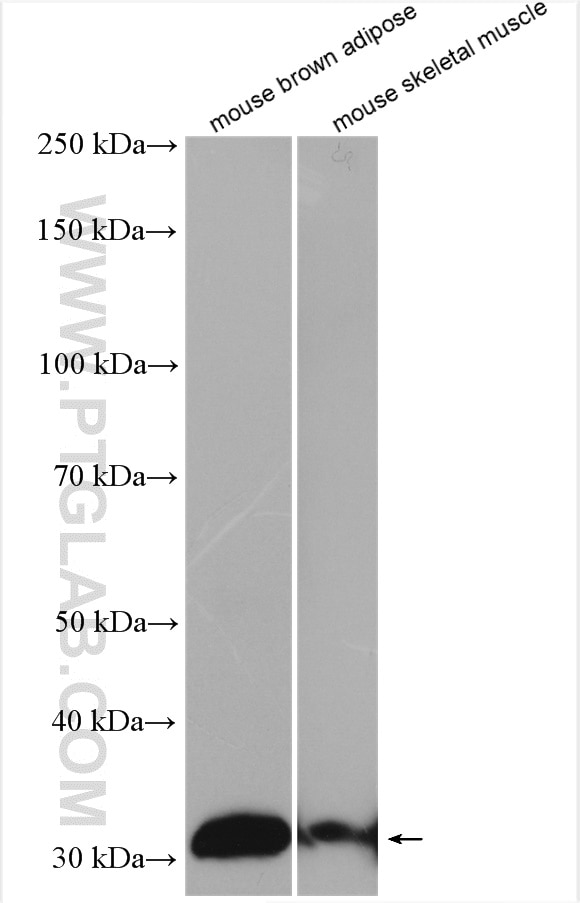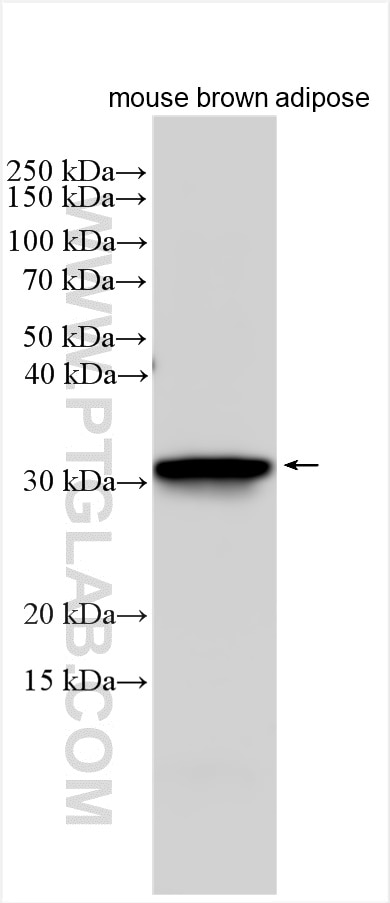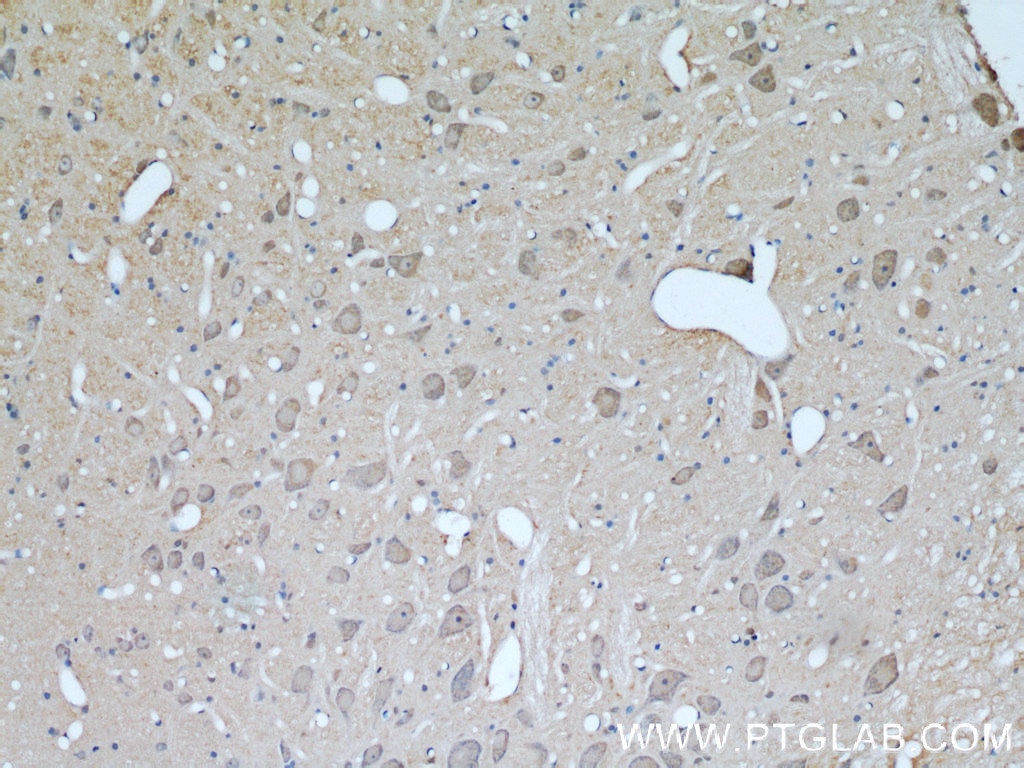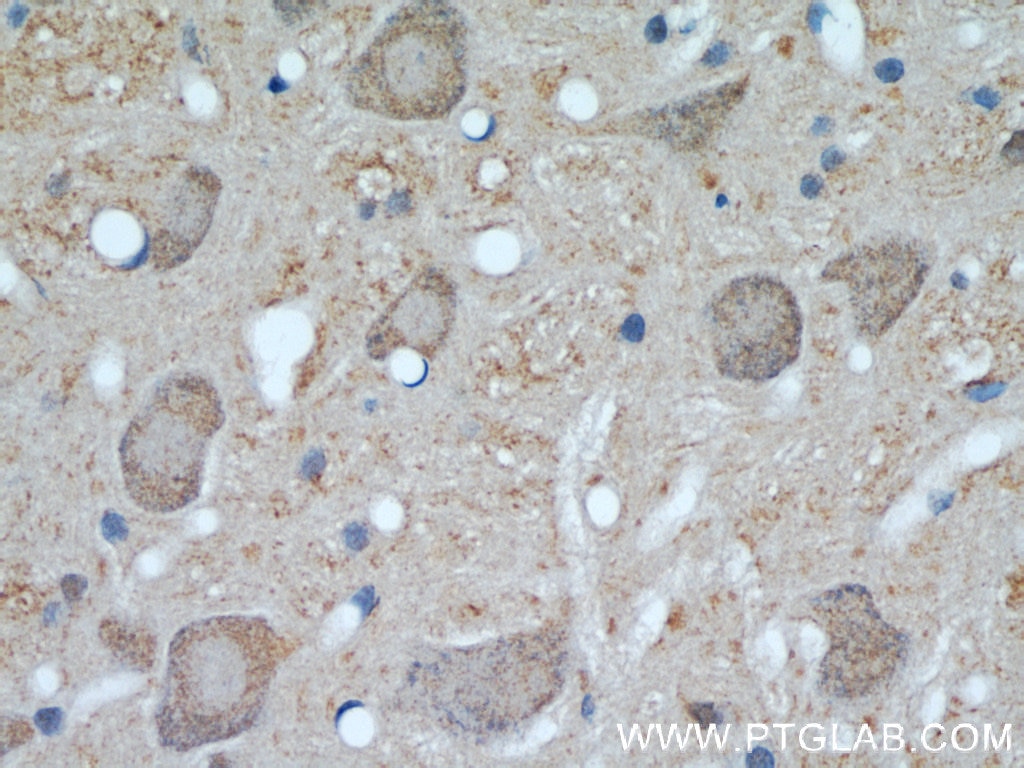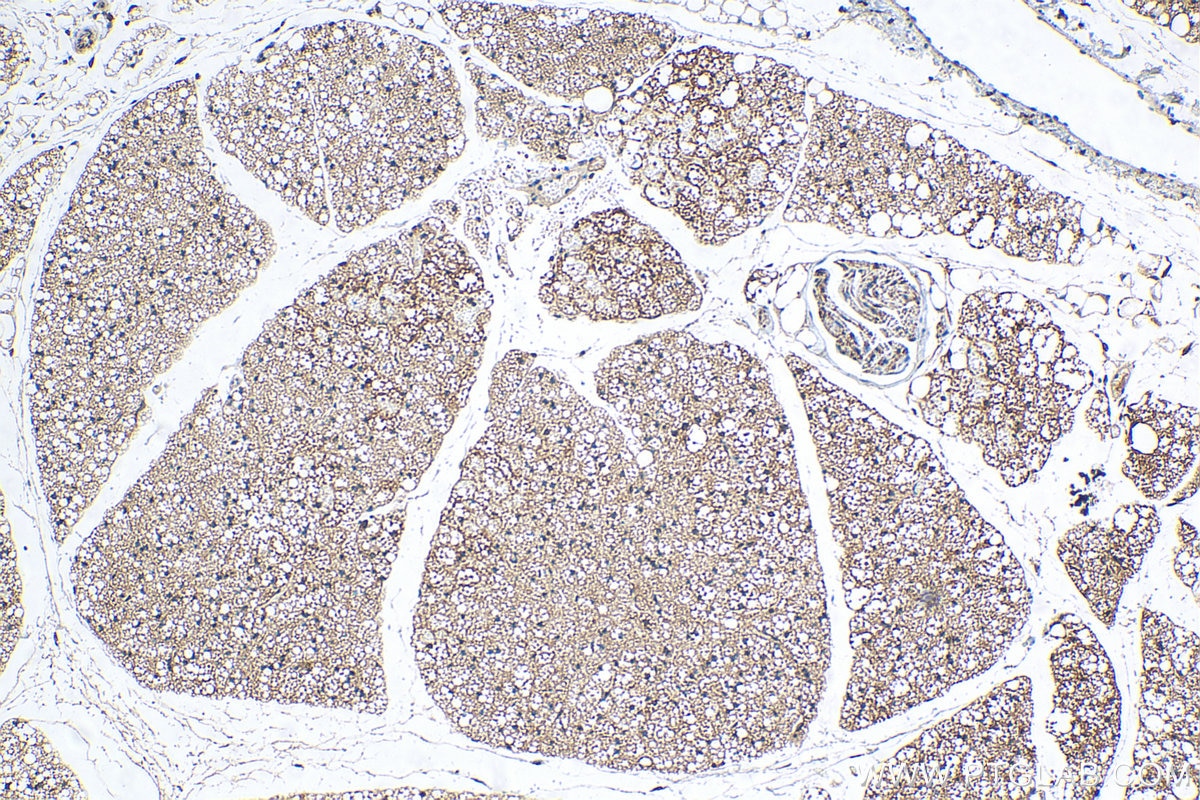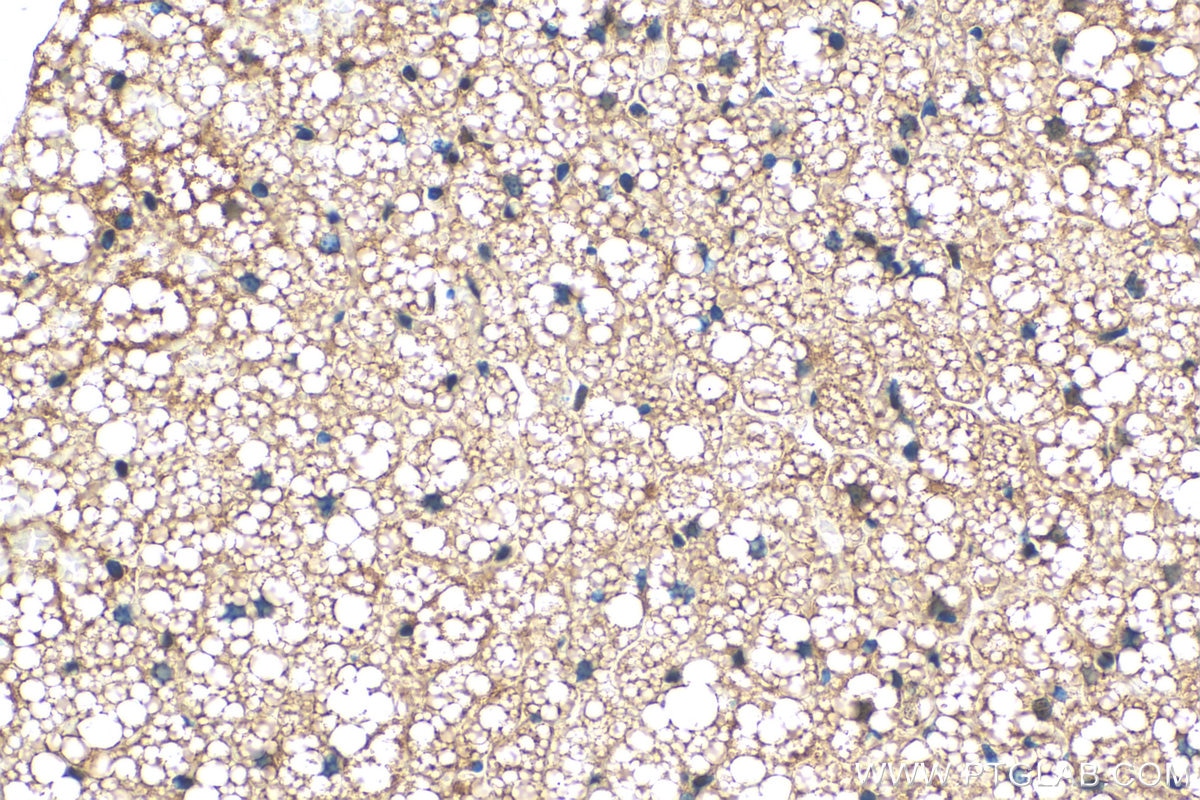- Featured Product
- KD/KO Validated
UCP1 Polyklonaler Antikörper
UCP1 Polyklonal Antikörper für WB, IHC, ELISA
Wirt / Isotyp
Kaninchen / IgG
Getestete Reaktivität
human, Maus, Ratte und mehr (3)
Anwendung
WB, IHC, IF, ELISA
Konjugation
Unkonjugiert
Kat-Nr. : 23673-1-AP
Synonyme
Geprüfte Anwendungen
| Erfolgreiche Detektion in WB | braunes Mausfettgewebe, Maus-Skelettmuskelgewebe |
| Erfolgreiche Detektion in IHC | braunes Mausfettgewebe, Rattenhirngewebe Hinweis: Antigendemaskierung mit TE-Puffer pH 9,0 empfohlen. (*) Wahlweise kann die Antigendemaskierung auch mit Citratpuffer pH 6,0 erfolgen. |
Empfohlene Verdünnung
| Anwendung | Verdünnung |
|---|---|
| Western Blot (WB) | WB : 1:1000-1:6000 |
| Immunhistochemie (IHC) | IHC : 1:50-1:500 |
| It is recommended that this reagent should be titrated in each testing system to obtain optimal results. | |
| Sample-dependent, check data in validation data gallery | |
Veröffentlichte Anwendungen
| KD/KO | See 3 publications below |
| WB | See 108 publications below |
| IHC | See 37 publications below |
| IF | See 14 publications below |
Produktinformation
23673-1-AP bindet in WB, IHC, IF, ELISA UCP1 und zeigt Reaktivität mit human, Maus, Ratten
| Getestete Reaktivität | human, Maus, Ratte |
| In Publikationen genannte Reaktivität | human, hamster, Maus, Ratte, Rind, Ziege |
| Wirt / Isotyp | Kaninchen / IgG |
| Klonalität | Polyklonal |
| Typ | Antikörper |
| Immunogen | UCP1 fusion protein Ag20388 |
| Vollständiger Name | uncoupling protein 1 (mitochondrial, proton carrier) |
| Berechnetes Molekulargewicht | 307 aa, 33 kDa |
| Beobachtetes Molekulargewicht | 33 kDa |
| GenBank-Zugangsnummer | BC098168 |
| Gene symbol | UCP1 |
| Gene ID (NCBI) | 7350 |
| Konjugation | Unkonjugiert |
| Form | Liquid |
| Reinigungsmethode | Antigen-Affinitätsreinigung |
| Lagerungspuffer | PBS with 0.02% sodium azide and 50% glycerol |
| Lagerungsbedingungen | Bei -20°C lagern. Nach dem Versand ein Jahr lang stabil Aliquotieren ist bei -20oC Lagerung nicht notwendig. 20ul Größen enthalten 0,1% BSA. |
Hintergrundinformationen
UCP-1 (Mitochondrial uncoupling protein 1), is a mitochondrial transporter protein that creates proton leaks across the inner mitochondrial membrane, thus uncoupling oxidative phosphorylation from ATP synthesis. It has been identified a key molecule for metabolic thermogenesis to avoid an excess of fat accumulation. UCP-1 expression is usually restricted to brown adipose when induced by cold exposure and thyroid hormone.
Protokolle
| PRODUKTSPEZIFISCHE PROTOKOLLE | |
|---|---|
| WB protocol for UCP1 antibody 23673-1-AP | Protokoll herunterladen |
| IHC protocol for UCP1 antibody 23673-1-AP | Protokoll herunterladenl |
| STANDARD-PROTOKOLLE | |
|---|---|
| Klicken Sie hier, um unsere Standardprotokolle anzuzeigen |
Publikationen
| Species | Application | Title |
|---|---|---|
Nature Feeding induces cholesterol biosynthesis via the mTORC1-USP20-HMGCR axis.
| ||
Nat Commun Improvement of obesity-associated disorders by a small-molecule drug targeting mitochondria of adipose tissue macrophages. | ||
Mol Biol Evol Functional Attenuation of UCP1 as the Potential Mechanism for Thickened Blubber Layer in Cetaceans | ||
Diabetes Exosomes From Adipose-Derived Stem Cells Attenuate Adipose Inflammation and Obesity Through Polarizing M2 Macrophages and Beiging in White Adipose Tissues. | ||
Cell Prolif Procyanidin B2 improves developmental capacity of bovine oocytes via promoting PPARγ/UCP1-mediated uncoupling lipid catabolism during in vitro maturation | ||
Int J Biol Macromol Structural characterization and alleviative effects of novel polysaccharides from Artemisia sphaerocephala Krasch seed on obese mice by regulating gut microbiota |
Rezensionen
The reviews below have been submitted by verified Proteintech customers who received an incentive for providing their feedback.
FH Mi (Verified Customer) (03-06-2023) | It works well in human brown adipocyte cells. Although we got several non-specific bands, the band at the expected size was very clear.
|
